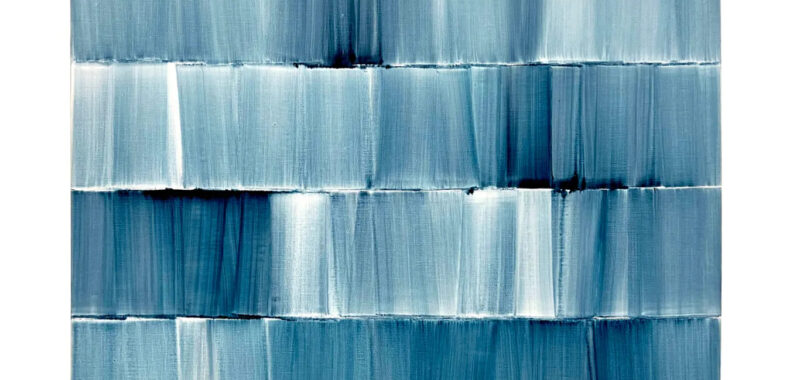LOS ANGELES — In 1965, the Immigration and Nationality Act significantly diversified America’s demographic composition by eliminating a quota system that favored Western European immigrants and giving precedence to skilled professionals and those with existing familial relations in the United States. Many of those who crossed the Pacific settled on the West Coast, doubling the population of Asian Americans in just 10 years. Almost 60 years later, Los Angeles County is now home to the largest population of the demographic in the United States. Pacific Abstractions, a group exhibition at Perrotin, draws attention to Asian abstract artists and traces their legacy through contemporary diasporic artists on the West Coast.
The exhibition includes a number of Dansaekhwa or “Korean Monochrome Painting” artists, a movement initiated in the 1970s to reflect on post-war Korea with post-industrial material, resisting expectations for art created under an authoritarian regime. In just the last decade, its importance in art history has been reinstated, in no small part due to art historian Joan Kee’s scholarship.
For his signature Écriture series, Park Seo-bo, one of the founding members of Dansaekwha, drew consecutive lines on traditional hanji paper, entering a meditative state in the process that counteracted the otherwise emotional turbulence of his divided nation. Standing over a canvas placed on the floor, second-generation Dansaekhwa artist Lee Bae evokes the body with “Brushstroke-38” (2024) by sweeping a single definitive mark of handmade charcoal ink with a large calligraphy brush. Shim Moon-Seup’s “The Presentation” (2015) diverges from his previous sculptural background, referencing breaking waves and Lee Ufan in his painting. The most contemporary of this group — and the only Korean American artist — is Los Angeles-based Yunhee Min, whose Small (2023) series experiments with how paint performs when applied to canvas in unconventional ways.

A single artistic movement does not unite the Japanese and Japanese-American artists in this exhibition, but they overlap in their evocations of the body and their experiments with materiality through abstraction. Kazuo Kadonaga’s organic abstraction, “Wood No. 5 CI” (1984), for instance, comprises a cedar log that the artist cut into hundreds of paper-thin horizontal sheets before reassembling the fragments, reflecting the artist’s time spent in his father’s sawmill. The holes punched through the surface of Naotaka Hiro’s “Untitled (Uproar)” (2024) held the artist’s legs while he painted the work’s surface. And Japanese-American artist Keisho Okayama, whose abstract color fields on machine-washed canvases were largely overlooked by art historians in his lifetime, was held in Topaz War Relocation Center, an internment camp in central Utah, in the aftermath of Executive Order 9066, which ordered the forced removal of Japanese Americans from their homes on the West Coast.
Pacific Abstractions succeeds in spotlighting Dansaekhwa among the overwhelming scope of Western Abstraction. However, the exhibition lacks historical contextualization between Japan, Korea, and other Asian countries, perpetuating colonial narratives that Dansaekhwa artists sought to resist. Pacific Abstractions could have illustrated a broader range of perspectives by including more diverse representation within Asia, contextualizing the historical relationships between countries, and emphasizing contemporary artists who engage in Los Angeles’s nuanced transpacific dialogue.


Pacific Abstractions continues at Perrotin (5036 West Pico Boulevard, Los Angeles) through November 9. The exhibition was organized by Jennifer King.

